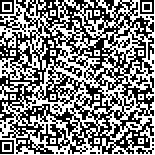下载中心
优秀审稿专家
优秀论文
相关链接
摘要

叶面积指数LAI(Leaf Area Index)是表征叶片疏密程度和冠层结构特征的重要植被参数,在气候变化、作物生长模型以及碳、水循环研究中发挥着重要作用。遥感是获取区域及全球尺度LAI的一个重要手段,当前LAI产品主要基于遥感数据反演得到,但是多数LAI产品算法并未考虑地形特征的影响,导致山地LAI遥感反演精度不确定性大。提高山地LAI遥感反演精度亟需考虑地形因子对冠层反射率的影响,其中山地冠层反射率模型和遥感数据地形校正是提升山地LAI遥感反演精度的关键。本文围绕山地LAI遥感反演理论与方法,综合分析了国内外山地冠层反射率模型和地形校正模型的研究进展,总结了目前山地LAI遥感反演存在的问题,并讨论了未来研究的发展趋势。
Leaf Area Index (LAI) is an important vegetation parameter that represents leaf density and canopy structure characteristics. This parameter plays an important role in climate change, crop growth model, and carbon and water cycle studies. Remote sensing is an important means to estimate LAI on regional and global scales. LAI products are currently mainly obtained by remote sensing retrieval. However, most LAI product algorithms ignore the effect of topographic features, which results in the great uncertainty in the accuracy of retrieved LAI in mountainous areas. The influence of topographic factors on the canopy reflectance needs to be considered to improve the accuracy of mountain LAI retrieval. Generally, there are mainly two methods to eliminate the influence of topography on mountain LAI retrieval. One method is to use the mountain canopy reflectance model to simulate reflectance, and the other method is to perform topographic correction on remote sensing data.In this paper, the research progress of mountain canopy reflectance model and topographic correction method were comprehensively analyzed on the basis of the theories and methods of LAI retrieval in mountainous areas. For mountain LAI retrieval method based on mountain canopy reflectance simulation, some mountain canopy reflectance models simplify the influence of topographic factors on atmospheric scattering and adjacent terrain scattering, resulting in poor model simulation and low LAI retrieval accuracy. Some complex mountain canopy reflectance models, such as geometric-optical hybrid model or computer simulation model, can accurately simulate topographic effect on reflectance, but it is difficult to invert due to complex input parameters. For mountain LAI retrieval method based on image topographic correction, it is difficult to choose suitable topographic correction method, because the generality of the existing models is poor that a single topographic correction model may only be applicable to a certain terrain condition, a certain area, a certain sensor or a certain waveband. In addition to the above two methods, some studies directly add topographic factors into the statistical regression equation of LAI as a control variable, so as to retrieve mountain LAI. However, this method may cause over fitting phenomenon and does not have robustness and portability.Based on the existing problems of mountain canopy reflectance model, topographic correction method and mountain LAI retrieval method, this paper summarizes and discusses the development trend of future research of mountain LAI retrieval. For mountain canopy reflectance model, it is necessary to develop a model that takes into account the non-Lambertian characteristics of the surface, the geotropic growth of trees, and diffuse radiation and other factors to improve the accuracy of model simulation. In addition, the parameter optimization and retrievability of the model should also be considered. For topographic correction method, it can be combined with BRDF correction or atmospheric correction in the future, especially for complex terrain. To accurately and efficiently retrieve mountain LAI, it is necessary to comprehensively consider factors such as the size of the study area, the heterogeneity of the ground surface, and the degree of terrain undulations, and choose an appropriate topographic correction method or mountain canopy reflectance model. Moreover, it is necessary to carry out more in-depth research on the validation of LAI retrieval accuracy in mountainous areas.

